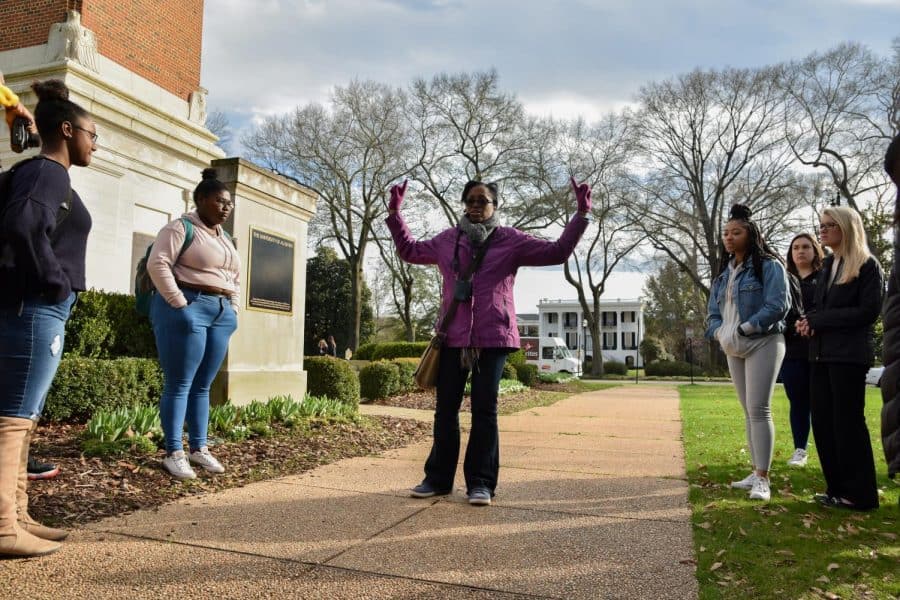Professors, student activists encourage rethinking of University history
Hilary Green created and hosts “Hallowed Grounds” tours, which expose the University’s ties to slavery. CW/ Hannah Saad
July 29, 2019
While making their first visit to campus, students may have been given a tour by students in suits and red dresses. Capstone Men and Women (CMW) are the official ambassadors of the University of Alabama, and they spend hours each year memorizing information about the University’s history, growth and development.
The vice president of operations for the group is responsible for updating the script each year, and ambassadors must take a test to ensure they know it inside and out. Amber Scales, a Capstone Women alumna, said that after tests are taken, tours range in content.
“We had a lot of conversations last year about how important speaking about issues of equity were,” she said. “A lot of people have stopped telling the ‘women and football’ story at Woods Quad without mentioning Julia Tutwiler’s efforts to get women enrolled on campus.”
But several students and faculty members have argued that the official sites are not the only noteworthy places on campus.
Four years ago, history professor Hilary Green started leading an alternative campus tour called “Hallowed Grounds,” in which she addresses the University’s long history with slavery and racism. Green’s tour includes slave cabins behind the President’s mansion, as well as several facilities built and housed by enslaved people.
Work by historians like Green has led to changes in how campus history is publicly addressed. After two years of meetings with communications professor Meredith Bagley and several students from the group We Are Done, University administration honored UA’s first African American student Autherine Lucy Foster publicly in 2017. A historical marker near Graves Hall now marks the site where Foster hid from a mob of white students and faculty demanding her expulsion and threatening her life.
Scales said the pressure has also been felt among the ambassadors to tell a truer story about the University’s relics.
“Dr. Bagley, Dr. [G. Christine] Taylor (who is the University’s Vice President and Associate Provost for Diversity, Equity and Inclusion) and Dr. [Jamie] Riley (who is the University’s Assistant Vice President and Dean of Students) have all come to meetings to speak to CMW about topics surrounding diversity, equity and inclusion,” she said. “The group now is a lot more receptive to tackling hard-hitting topics on tours, but for in-depth history on things like slavery and Autherine Lucy’s full story, the alternative campus tours are the best place to go for information and are a great exercise in public memory.”
This summer, the Tuscaloosa Civil Rights Task Force unleashed a tour of 18 new sites around the surrounding community that addressed its history of racial pride and violence. According to president Scott Bridges, the tour will expand to sites on campus in the future.
For those interested in viewing these sites, we created a map that includes all of them, overlayed on the route of the official campus tour. For more information on each of these sites visit:
- Hallowed Grounds: hgreen.people.ua.edu/hallowed-grounds
- Civil Rights Tuscaloosa Trail: http://civilrightstuscaloosa.org/trail/
Campus Map (Includes official campus tour route, historical markers, and commemorative trees): https://www.ua.edu/map/








